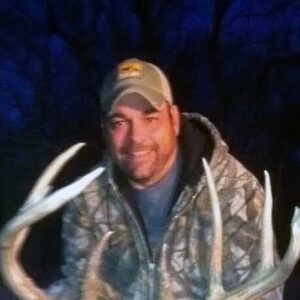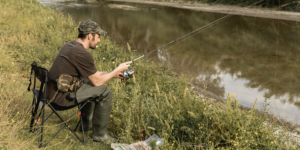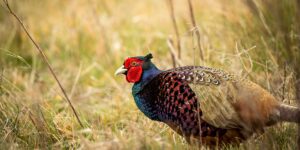The Kansas WIHA (Walk-In Hunting Area) Program was designed to open private lands to hunters, but the lack of good habitat has caused issues in recent years.
Over 25 years ago, the Kansas Department of WIldlife and Parks recognized a need for more access to private land to hunt across the state. The Walk-In Hunting Access (WIHA) Program was created out of necessity to give hunting access to more lands. But is the program as great as it seems for hunters and landowners?
Why limit yourself to public land when there are millions of acres of private land to explore.
History of the Kansas WIHA Program
The Kansas WIHA program began in 1995 after wildlife officials wanted to enhance hunting access by giving sportsmen and women access to private lands for free. To entice private landowners to enroll in the program, they would be provided financial compensation based on how many acres they enrolled and the length of contract they agreed to.
Originally, the program focused solely on upland habitat in the central part of the state as pheasant numbers in the late 80s and 90s boasted some of the best rooster numbers in the U.S., bringing sportsmen from across the country to hunt The Sunflower state. However, since its inception, the program has spread across the state and enrolls lands that are also good for waterfowl, deer, and turkey hunters.
WIHA applicants are chosen by field biologists who enroll properties based on specific criteria such as proximity to major population centers where access for hunters is more difficult, and by the size and type of property.
Since its inception over 25 years ago, the WIHA program has enrolled 1 million acres of land into the program. But like with most things, the program isn’t perfect and has seen its share of difficulties.
Kansas WIHA Map
Below you can see the most recent map from the state of Kansas. To view here on the site, accept their terms or to view their full map, please see the Kansas Department of Wildlife and Parks Map.
WIHA and Habitat
Maintaining quality habitat for wildlife has been a priority for wildlife officials across the country, and was the basis of how the WIHA Program came to be. Habitat was, and is, disappearing due to farming encroachment and city development.
The WIHA focuses on locating and enrolling only ideal lands into the program. Kansas biologists look for quality habitat that is ideal for nesting, breeding, and feeding wildlife before enrolling private lands in the program. Land enrolled in the program can consist of Conservation Reserve Program (CRP) grasslands, native rangeland, wheat, or milo stubble.
At the start of the WIHA, lands that were already enrolled in the CRP program were targeted to become walk-in areas for public access. The CRP program, run by the USDA, incentivizes farmers to enroll lands that may have less productive soils for crops and instead plant native grasses. These native grasses are ideal for nesting and brood rearing cover, which is vital in maintaining upland bird populations as habitat continues to diminish with the onslaught of farming and the demand for crops. In the mid-90s, farmers made $15 to $20 per acre a year to enroll lands in the CRP program.
However, in recent years, the CRP program and funding has been cut in half and with it the lands that were enrolled and managed for wildlife and hunting opportunities. Lands that were enrolled as CRP had to maintain a standard and were carefully managed. For WIHA lands, things look a bit different.
“30 to 50 percent of the 1 million acres enrolled in the WIHA is not huntable ground, depending on the region” says Shawn Mahaffey, Wing It CEO. “During the season, what is good, is overrun with hunters and turns to not great hunting habitat really fast which severely limits the success rates for outdoorsmen.”
According to Mahaffey, farmers enroll idle cattle pastures into the program which lack large swaths of habitat to hold birds. So, when hunters roll up expecting to find great hunting lands, they instead leave with a poor taste in their mouth and no birds in the bag.
Since CRP has been dramatically reduced over the years, farmers began opting out of the program. Improved grain prices led farmers to farm ditch to ditch and eliminate close to 50 percent of natural cover. Farming the land paid a lot more than the CRP program.
Lands enrolled in the WIHA program average $2 to $6 per acre per enrollment period. This low number is nice change in the pocket for some farmers, but isn’t enough to push them to maintain quality habitat, and with CRP lands on just 60 percent of WIHA lands, hunters may find themselves with lower quality habitats to hunt, even if they are free to use.
Kansas WIHA vs Wing It
Game such as upland birds need cover, food, and water to survive and thrive. Quality cover is a must to protect from predators and natural elements such as large snow falls during winter months. When natural habitats are taken away or decreased, populations suffer or completely leave the area.
Wing It recognized the need for quality lands to be open to hunters and incentivize landowners to maintain habitat for wildlife.
“When a landowner enrolls in Wing It, they could potentially get to the point where they make $200 per acre every year just for hunting rights. Upland birds, deer, waterfowl, turkeys and doves alone can produce these numbers in the right areas,”says Mahaffey.”Farmers managing their properties properly and treating Wing It like a business develops an additional, significant income stream, farmers can easily do better than CRP and definitely WIHA.”
Wing It landowners are required to list property that supports the activities they are selling. Hunters don’t want to pull up to an Upland spot only to find a cover free winter wheat patch.
“We want landowners to add to the cover on their properties by not mowing waterways to the edges, leaving two to three rows of crops around the edges and letting ditches grow back as well as leave CRP strips that they hay in drought conditions.” explains Mahaffey. “They need to monetize their properties in other ways to allow for positive, less risky cash flow.”
The Wing It platform opens private lands for hunters by offering small usage fees to access private lands and exceptional habitat. When booking access online, hunters can see exactly what they are short-term accessing so they are not surprised by lack of habitat when they pull up to hunt. Additionally, hunters know exactly how many other hunters will have access to hunt the lands, and can go in with ease of mind that they have complete private access for the length of their rental—unlike WIHA lands where they are open to the public at all times. Enjoying a nice stretch of CRP on a walk-in area and another hunting group shows up? Ethics and morals would tell them to find another stretch of land, but sometimes morals are forgotten when birds are flushing.
The hassle free way to monetize your acreage.
The New Model for Monetizing Unused Farmland
Any landowner can sign up and monetize their land with Wing It, so signing up is an obvious first step. Then, it’s worth signing up for CRP or a similar Federal subsidy program if you’re eligible. These programs can be used together with Wing It, so signing up for both really is the best option for landowners, but even if you just list your property and offer hunting, fishing, camping or other eligible activities, you have a clear path toward easy monetization with low risk and a high level of control.
FAQ
Is Wing It free to use?
Wing It offers a free platform or a membership based incentive. Non-members may pay to access lands enrolled in Wing It, while members pay a smaller usage fee to access private property.
Can you hunt walk-in access in Kansas?
Any licensed hunter is welcome to hunt WIHA lands for Kansas wildlife during contracted dates free of charge. These dates generally run from September 1 or November 1 through January 31st and lands are clearly marked with WIHA signs.
How much does Kansas pay for walk-in hunting?
The Kansas Department of Wildlife and Parks pays landowners anywhere from .50 an acre to $6 an acre per contract time frame. Typically, that lease runs through the hunting season from September to late January.
Can non-residents hunt the WIHA land in Kansas?
Yes, any non-resident hunter who has purchased a Kansas non-resident license can hunt WIHA lands. Hunters can locate properties online and where WIHA signs are posted.
How much does Wing It pay landowners?
rs are able to enroll free of charge. Landowners income stream comes from the user/member activity fees. Landowners receive 100% of activity fees. Landowners who treat this like a business can see up to $200 per acre/year depending on habitat and location.



